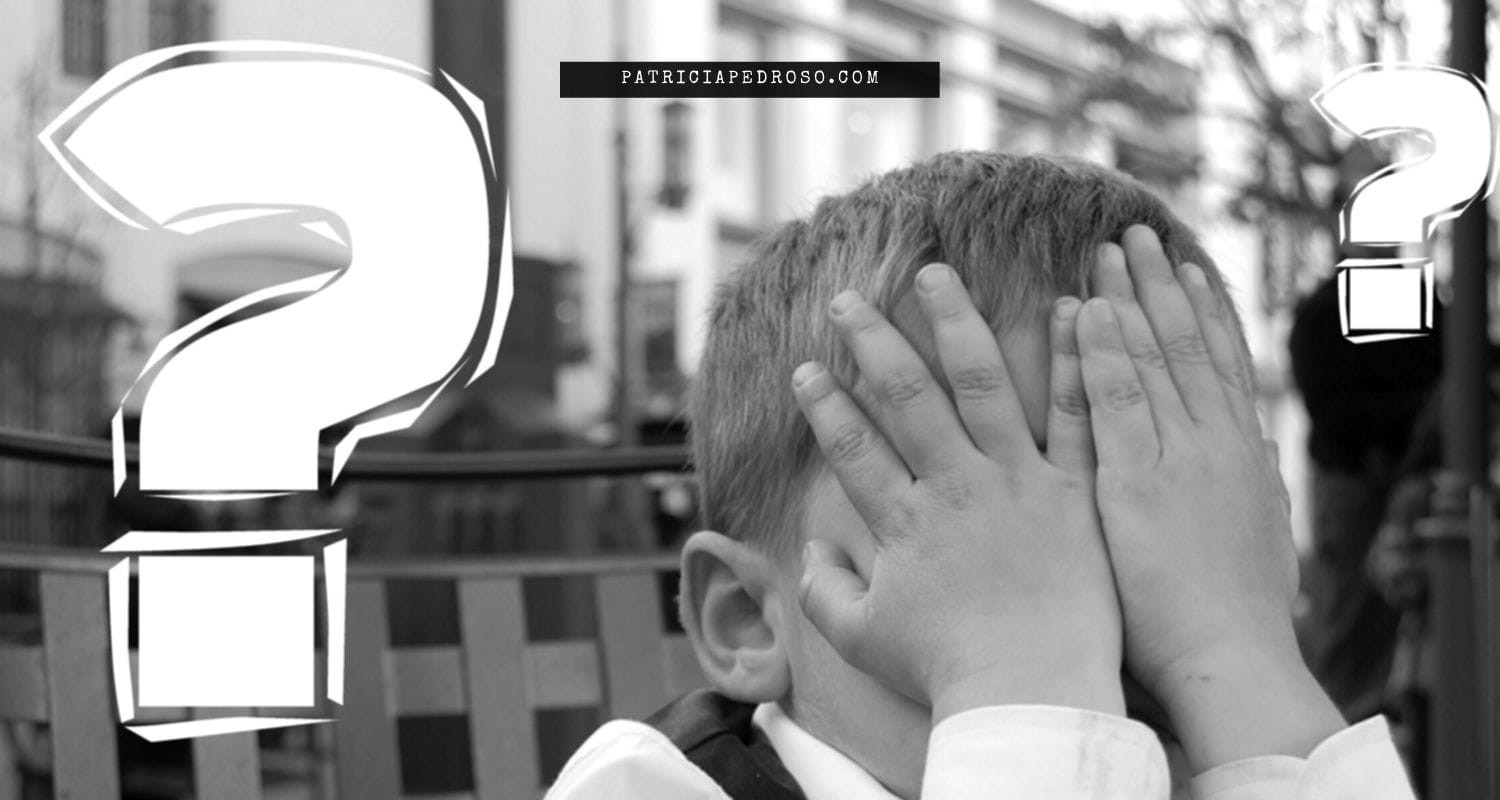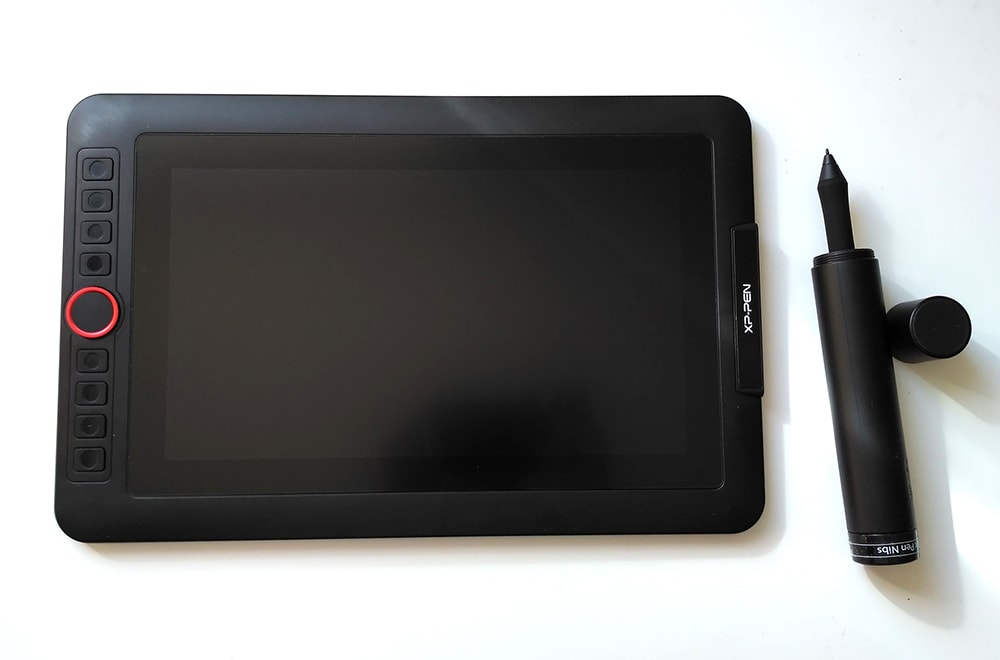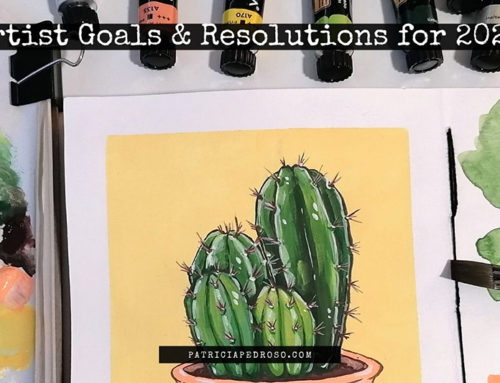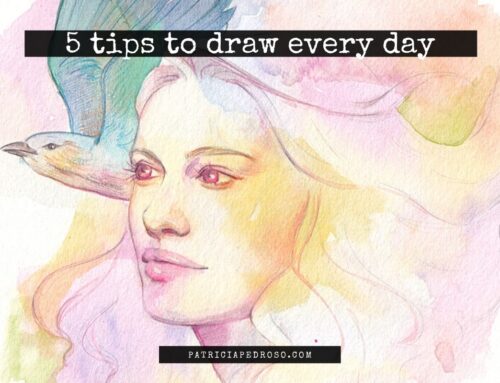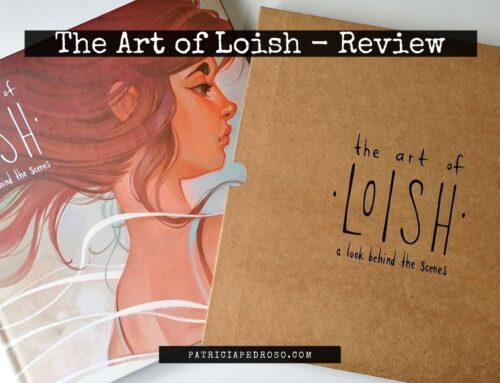Are you stuck with art? Check if you’re committing these big No’s
This week’s post is a long compilation of beginner art fails that I see constantly on people who are starting out or are very young artists.
We all have committed some of these – if not all – so don’t be too hard on yourself if you see yourself falling on one of these. Instead, try to use it as a way to realise if you’re doing something wrong and start working towards fixing it.
The first step to eliminate a bad habit is to identify it and wanting to get rid of it.
I’m gonna try put them in order from the most basic mistakes to more “experienced” ones, so there’s a bit of a progression.

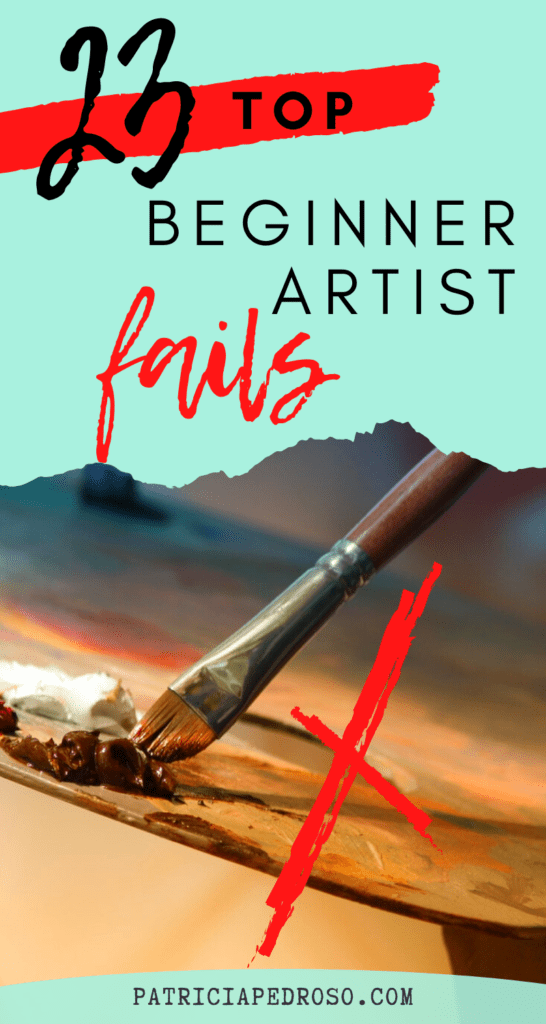
*Reminder that this post contains some affiliate links. This means I might get a small commission when you click and buy something with that link with no additional cost to you. However, my reviews and recommended products are not influenced by this, I’ll only recommend what I use and what I believe is good. Click here to read the disclaimer if you want more information*
1 | Blending in excess
When you discover blending stumps or the “digital smudging” tool it seems like a godsent – and obviously – we tend to get excited.
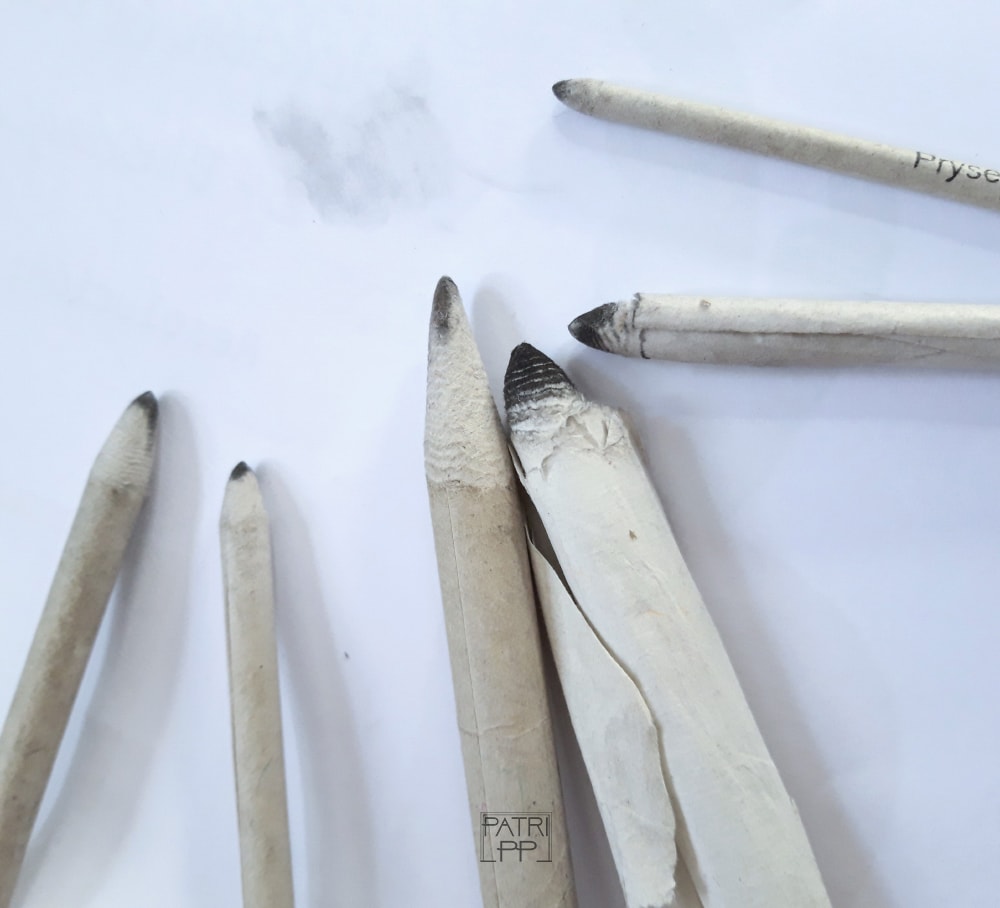
Because what’s better than something that blurs out and mixes colours – or shadows – to fix a few mistakes here and there?
Well, I know it’s exciting and incredibly useful, but as a beginner, you probably should avoid those. The “blur look” is not doing your art any favours – and neither to you as an artist.
The thing is, you start being careless about your colour mixing or your gradients so you’re really not learning a thing.
Besides, more experienced artists can smell it from a mile away, and – I can tell you – no one likes the blurry look in art.
Oh, and this can be applied too when using the big airbrush tool on everything when painting digital, one of the big common art fails. – just don’t.
This last one is like “the indicator” someone is a beginner in art or in digital. When you know how to use it, an airbrush tool can be useful, but you need variety in a drawing, edges and sharpness sometimes instead of everything fuzzy.
2 | Drawing multiple lines instead of a single line
Doing this mainly indicates that you don’t have enough confidence to draw a single straight line. The truth is we can all do it from the beginning, we simply choose not to because it seems easier that way.
It’s all a matter of practice and trying to draw with the movement coming from the arm and not the wrist or fingers. It might seem easier to start if you’re drawing on a bigger scale. – It did help me.
Drawing multiple lines is something we all do, especially when sketching but there’s a difference when you doing it on purpose or because you’re lacking the skill.

Here’s something I grabbed from Proko’s blog, cause this is all I can think of when I see beginners doing it, and he explains it perfectly in his video that I would leave here for you to watch if interested.
3 | Erasing too much
We all commit this mistake at the beginning and after a few years… “Eraser? What is that?“
Honestly, we give our erasers too much credit – and use… Also breaking and damaging our paper.
We need to start by learning that you have to start with light lines and then as we perfect the sketch/drawing we increase the pressure. After a while, you’ll only use the eraser to add highlights or strategically clean up a sketch.
Now you might be screaming at me trough the screen: “Are you crazy? I’ll never be able to draw without an eraser!!”
I didn’t believe either at the beginning. I even laugh at some of my teachers (only when they weren’t looking) when I heard that I would barely erase lines later on…
But to my surprise, they were right!
4 | Copying other artists (and post it without credit)
This is a really common artist pet peeve.
With this I’m not saying you shouldn’t copy art – because you absolutely should – it’s really helpful to study and master different art techniques, lighting, colour, shapes …
So, what’s the problem here?
There’s not a big problem if you’re doing a Mona Lisa study (everyone will know it’s a study, still you should say so), but there is if you’re copying a contemporary living artist and then you post it around without credit them.
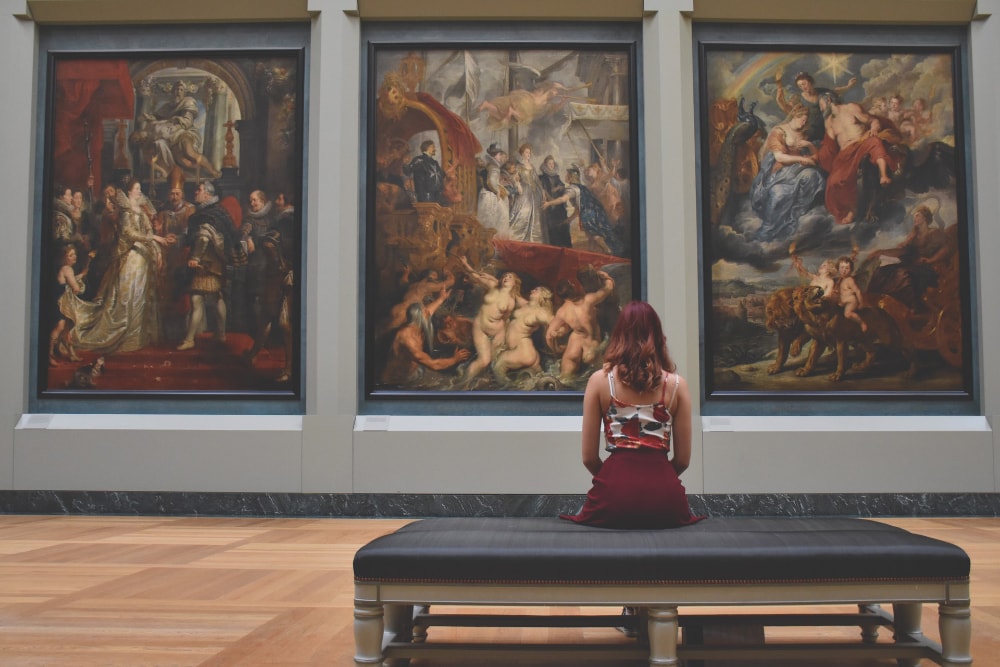
I would directly recommend you not to post it, keep it to yourself. There’s no real need to post all 100% that you do. But if you really, really want to post it, ask the artist first if they don’t mind and make sure you give them full credit for the idea.
Note: even if it’s a classic artist you should always credit the original author, do not go around taking credit for what’s not yours.
5 | Using the “that’s just how my style is” excuse
If you’re not good at something, just admit it, don’t go excusing yourself with “that’s how my style looks like”.
I assure you it won’t fool anyone – not even people that don’t know shite about art – and it’s not good to you either to believe it.
Stylisation is good, but it should never be an excuse to poor proportions, anatomy, etc.
6 | Hiding your weaknesses
Quite similar to the previous, this one is about to hide the things you don’t draw so well so you don’t have to do it – Art fails warning! You might not like this….
Yes, I mean hiding the hands of your characters in weird positions so you don’t have to draw them.
I’ve seen ita lot, and honestly it looks terrible – specially the hand example – to see people appeal to the weirdest poses to hide them.
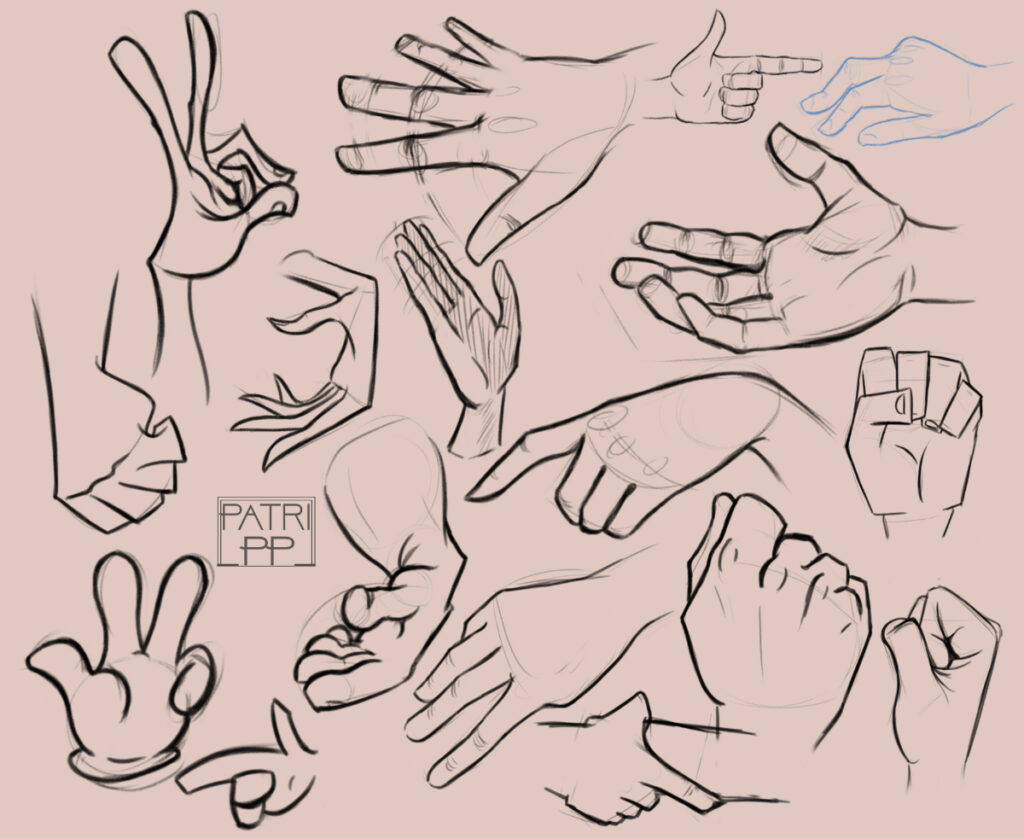
Confront your fears and practice your weakness a lot till it’s not one anymore. You won’t be able to avoid them forever.
7 | Tracing & using bad references
First, you should only trace your own art – maybe to transfer it or whatever you might want to do. Never trace someone else’s art, it’s just wrong. If you think you’re learning from it or something, let me tell you, you’re not.
If you copy someone else’s art for study purposes it’s to train your eye. Your eye will not be trained by tracing, cause tracing doesn’t help you improve at all.
You can learn for example anatomy or perspective by “tracing” photography or art in a way to identify proportions, vanishing points and such... But it’s not straight-up tracing without thinking but more like studying. You can see character designer Stephen Silver do that over heads in his course on Schoolism that I talk about more on this post.
Second, onto bad references. You should be careful what you pick as your reference, especially if you’re studying.
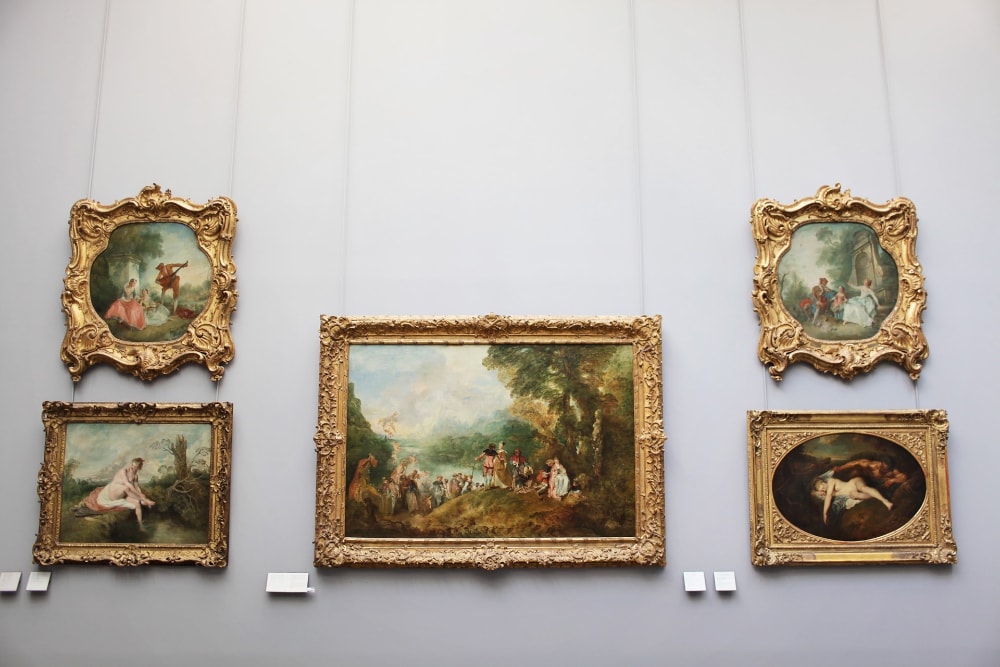
I see people copying other artists art to study them by copying artists who have very basic to none drawing experience. You should always learn from artists that are at higher levels than you are.
Note: with this, I’m not talking “only study classic artists/art”, they’re masters yes. And you should probably take a look at how they did some stuff, but that might not be the only art you’re interested in.
It’s simple, do not copy bad art, it’s gonna make you commit the same mistakes they are doing and wasting your precious time. One of the worst art fails!
8 | Bad alignment of facial features
This one is usually very common to beginners as they lack the knowledge of
It’s easier to fix than what it seems, there’s a lot of tricks out there about it. At first, it might seem like a lot to take in, but take some time to learn and practice and soon you’ll be making perfectly proportioned faces!
9 | Start adding details before finishing sketching
This one of the art fails is actually not “only for beginners”, it’s quite easy to fall into that if you get the bad habit. I actually tend to do it sometimes, especially if I’m very in the zone.
But, this is a habit you should try to break, so you avoid further work.
It’s really frustrating to get a perfect face but then realise that it doesn’t fit the body angle you have sketched, or whatever it might be.
This comes with the typical phrase of: don’t get too attached to anything. It’s hard as an artist to love a sketch but then realise it’s a physically-impossible pose (for example)… – it’s really frustrating I know.
That’s why you should get used to do quick non-detailed sketches, thumbnails and such to avoid further work.
10 | Beginning with digital instead of traditional
Note: I’m not saying I’m against it, I’ve heard of a good bunch of artists that have started in digital and it worked for them, but they were very persistent and worked very hard, and not everyone does that. I’ll explain my thoughts bellow.
This is an unpopular opinion lately, as many young artists nowadays start with digital. And yes, it might work for some, but it’s not ideal.
Having all the facilities of digital art at a click of your mouse is not helpful when you’re starting out…
With this I’m not saying you need to start painting with oils to be a real artist or anything like that. It doesn’t have to be complicated; pencil, fineliners or charcoal are all cheap and easy to find everywhere.
I’m not speaking as a “digital art hater” because I work with digital too and I love it, but I can see it being a problem. Many great illustrators and artists say so as well, some of them mainly working with digital at the time.
Having difficulties it’s a part of the process.
Learning to draw a straight line without the help of a stabilizer will make your art much better, or knowing you can’t erase, … Many of the drawing processes you’ll do with traditional would later be applied when learning digital, making it a smoother ride than it would have been without that base.
I know the adaptation for me was much easier having the traditional knowdledge. But you do you, it might work for you!
Related: How to use textures in digital art.
11 | Draw everything from your head
It’s so incredible how your favourite artists seem to know how to draw everything without even needing a reference.
This is not a miracle, they took the time to study a lot of things and have drawn so many things that they know how to do it by heart. They’ve been drawing for years, decades maybe. And still, they don’t know how to draw everything.
But you, on the contrary, might not have as much mileage, and that’s fine!
Don’t try to draw things you don’t know how to draw from imagination, it’s much better to take a few references or take some time to study how it works.
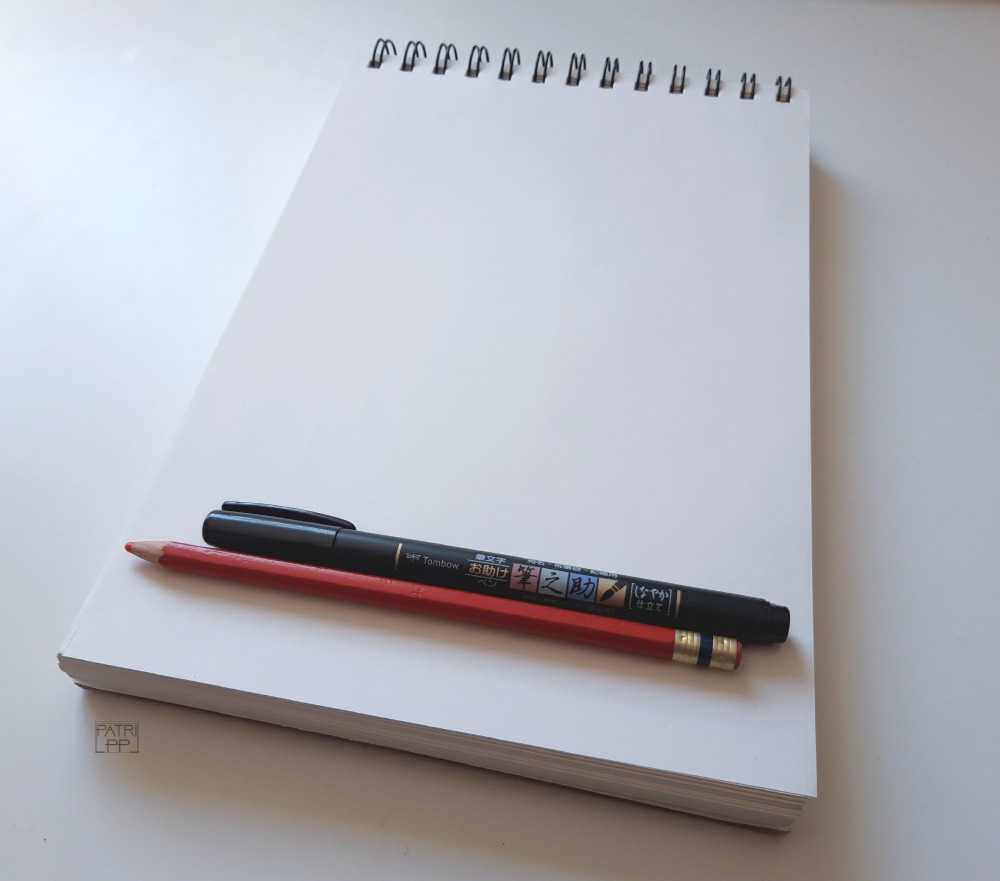
Also, there are times we need references but we don’t want to use them, we want to draw everything from our heads cause it makes us feel much better. I get it, but it’s best to get a reference than to struggle with a pose for hours to still get it wrong.
There’s this trend going on that it seems to shame artists that use references and telling them that they’re not real artists. Please, don’t listen to any of that bullsh*t. Not one real artist/illustrator will say this, they will blatantly laugh at them, and they should. Not using reference is one of the worst art fails.
I see young artists abandon their references really early on – when they barely know the basics – and this is a huge mistake. Remember, experienced artist use references all the time, and you shouldn’t feel pressured to do otherwise.
You have to build your visual library, and for that you need references. And still there would always be something we don’t know how to draw.
12 | Outlining EVERYTHING
Not everything needs an outline and sometimes linework can get in the way of your progress.
I’m telling you this as a big linework fan.
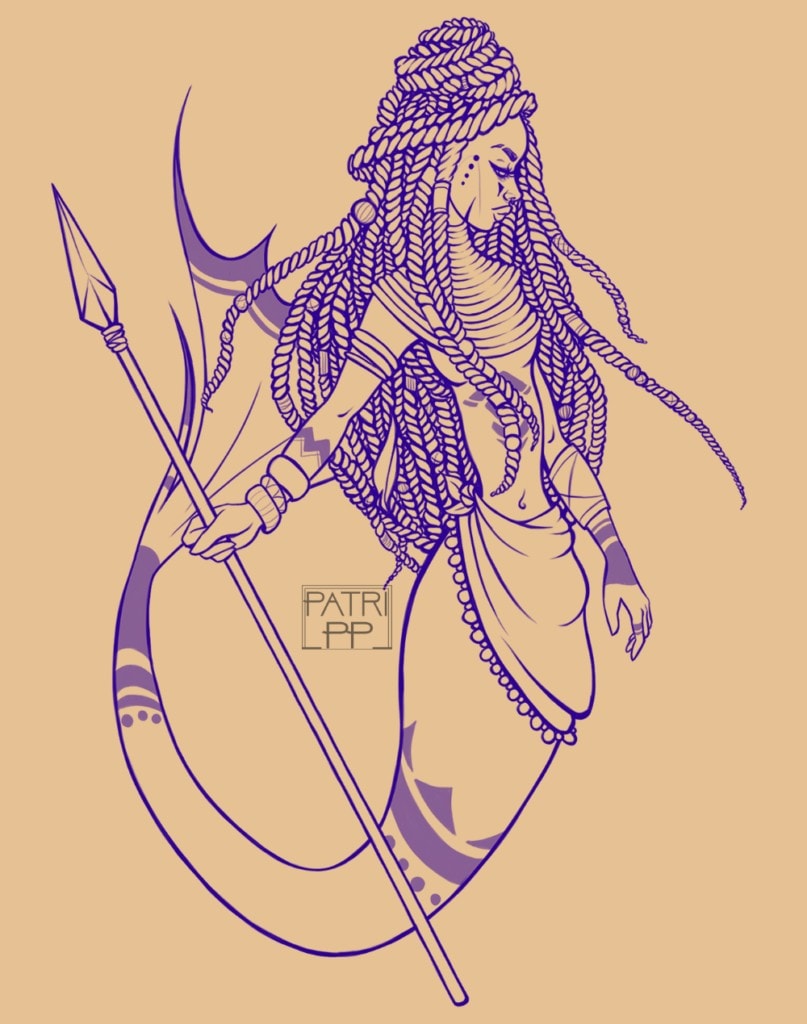
Linework can be part of your style, yes, but most of the times at the beginning of your art journey it’s not. It’s simply that you don’t know how to draw things if it’s not outlining them. Trying some exercises to work without linework from time to time helps you a lot getting out of your comfort zone.
If you’re ahead on your art journey and this is not a problem for you but you do want to get better at linework, here are some tips!
13 | Inconsistent lightning
If you have a composition then everything should be illuminated in the same way. One of the biggest art fails I see, is artists adding highlights to one side when the light source it’s clearly pointing towards the contrary, especially when they’re dealing with multiple objects.
Be careful with this, if it’s too hard at the beginning, then avoid jumping into multiple light sources.
Keep it simple till you know how to work with it better.
When I was starting out trying to understand how lightning works, something that helped me a lot was Gabrielle’s class over on Skillshare. It had so many resources and it was really simple to understand. It’s mainly focused on portraits but it gives you a lot of basics about lightning as well.
And if you sign up to Skillshare with this link, you’ll get 2 months of premium membership for FREE! So you can watch this class and any others during those two months to see if you like it!
14 | Having unrealistic expectations
Expecting to be an incredible, professional artists that dominates everything in a small amount of time is impossible. Just accept it.
Many beginners believe art is easy, that some people are just “born with talent” and this couldn’t be farther from the truth, some people pick up some skills faster, but that doesn’t mean you can’t do it. But…
Art takes time.
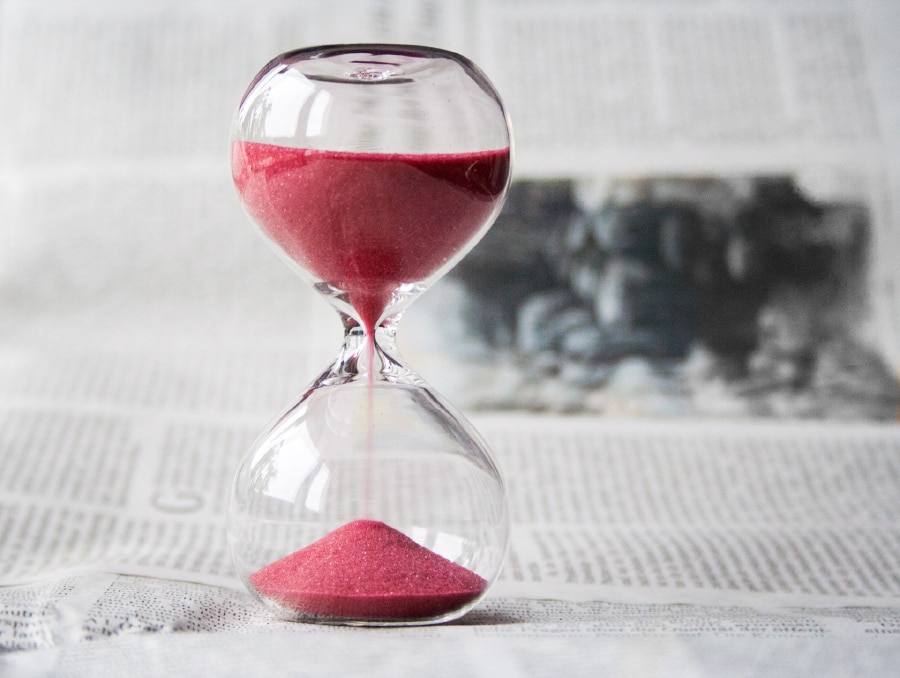
Have you heard about the 10.000 hours rule? It states that it takes 10.000 hours to master anything.
I believe this depends on the dedication and the person, but still, you get the point.
15 | Bad perspective
This is one that takes time too, I know perspective is hard.
But don’t try to do perspective without learning about it first, so many things could go wrong…
16 | For painters: muddiness aka mixing too many colours or too much black
As I talked about in my previous blog post – 13 Basic colouring tips that would drastically improve your art – Adding black in your mixtures usually gets your colours all muddy.
And the same goes for mixing too many colours instead of just a few, check the post for further explanation.
17 | For beginner digital artists: Using layer effects too much. And let’s not talk about the stabilizer…
Layer effects can be miracle workers when you first start using them, I know. But using them too much is just… Well, too much.
Anything that it’s being overdone/overused is never good.
And about the line stabilizer, it doesn’t help you improve at all. Unless you really need it (I know there are people out there with shaky hands or health problems that result on that) try to avoid it or set it really low.
18 | Not wanting to learn the fundamentals
“I don’t need to learn the fundamentals to be a good artist”
Yes, yes you do.
At least if you’re serious about your art and improving, and especially if you’re hoping to be a professional artist.
I don’t even think I need to add anything about this or justify it. Artists that don’t learn fundamentals result in…. You guessed it! Big art fails.
It’s not something you learn overnight, but don’t put it off.
19 | Avoid learning anatomy
Same here. Don’t excuse yourself, all artists need some basics of anatomy. Even if you want to be a background/landscape artist, you need some basics.
You’ll see a trend here, these are just some basics about avoiding art fails here: never avoid learning. Art is a constant learning experience and if you’re not up to it – harsh truth here – you’ll never improve.
20 | Impatience
Art and learning take a lot of patience and love.
You might be impatient but you have to teach yourself to be patient with some things if you want to improve. If you care about art and enjoy it, you should be able to put in the hours.
21 | Believing you don’t have it or you’re not talented enough
This is something we all go trough from time to time. Also called imposter syndrome.
Sometimes is because you’re just starting, sometimes you’re comparing yourself.
Whatever it is, you can be whoever you want to be and archive whatever you want if you work hard enough.
Don’t ever give up, you have a lot of potential. It just takes time.
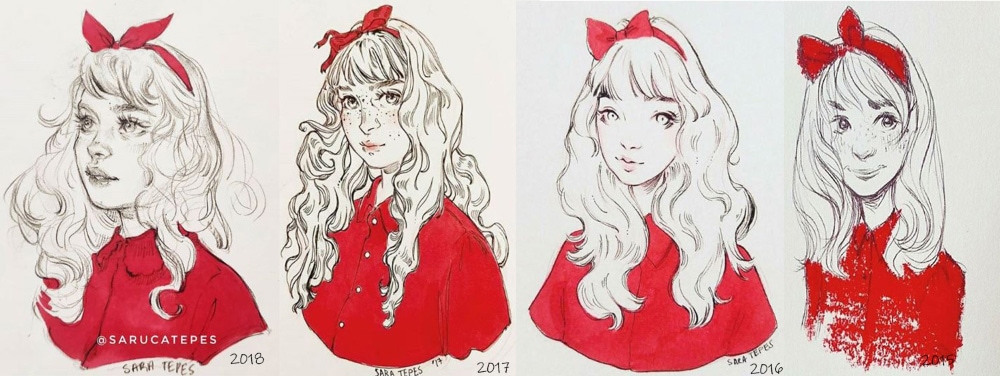
22 | Compare yourself all the time
These last couple of art fails will mostly affect your mental health and your confidence. Breaking this cycle is essential to your work and your mental health.
I can not stress this enough. Do not compare yourself to others but to yourself.
It’s hard, and you might fall into it sometimes, but you will have to learn to get out of it.
23 | Staying on your comfort zone
This can be one of your biggest art fails if you want to go somewhere with your art. If you are just a hobbyist and you don’t care then it’s fine.
But if you want to improve, getting out of your comfort zone from time to time is the best you can do. Use new colours, try new techniques, mediums, whatever you can think of!
There’s no room to boredom with art, and always something new to learn!
Have you been – or are you – a victim of one or more of these art fails? Come chat with me in the comment section about it!
We might be able to break the habit together!

